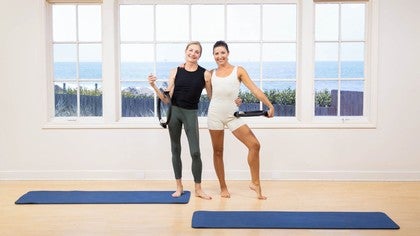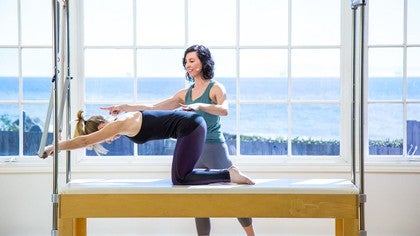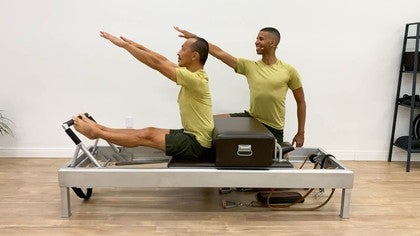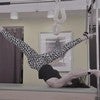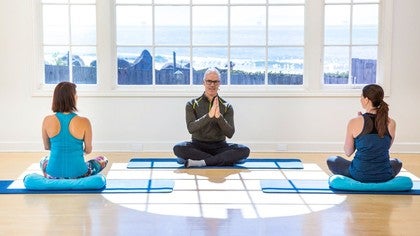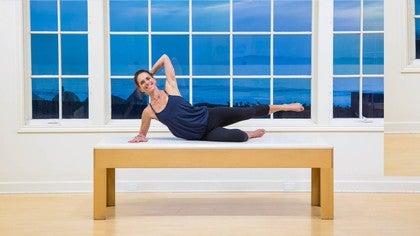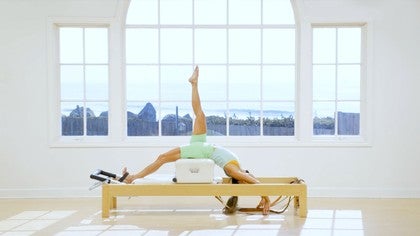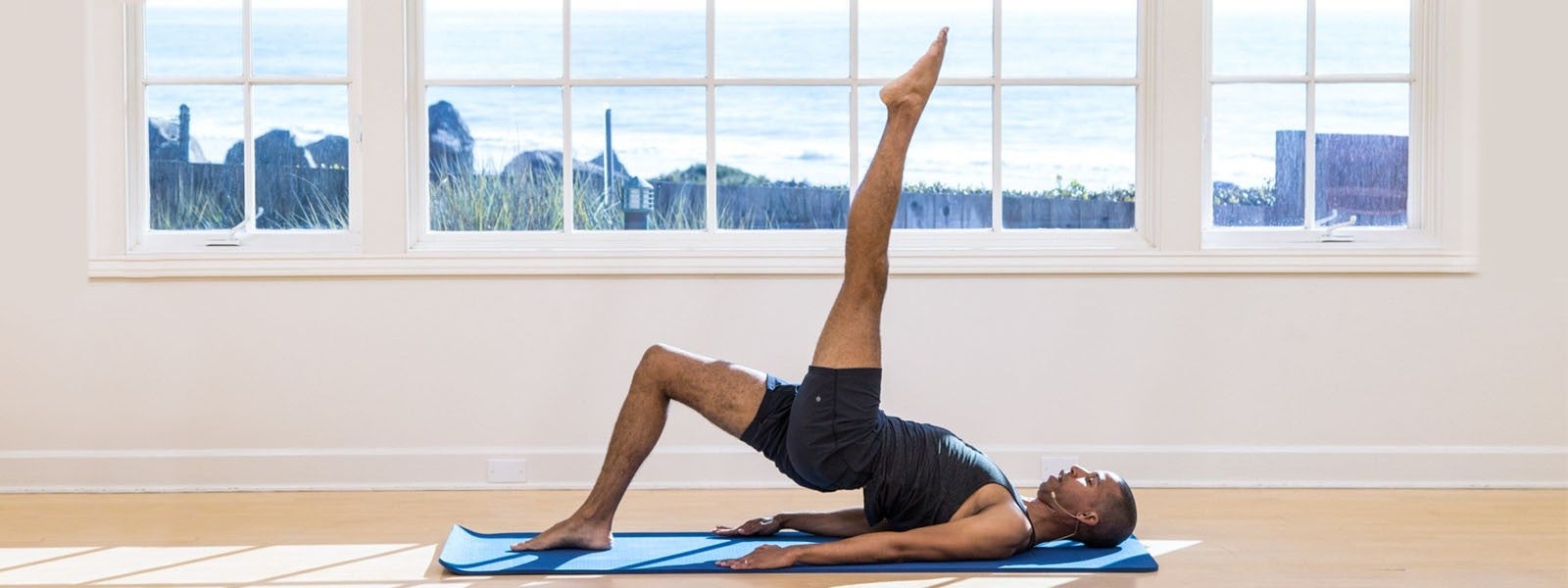
How Well Do You Know Your Pilates Mat Exercises?
The Mat work is designed to be performed in the order that appears in Joseph Pilates' "Return to Life Through Contrology." Just like the Reformer work, the Mat work builds and layers concepts and skills as the exercises increase in difficulty. Each elementary exercise contains the building blocks of the more advanced work. Traditional Pilates instructors often teach the intermediate and advanced exercises by pointing out that they contain the elements of the more basic ones. For example, an instructor might offer the cue, "Find the Double Leg Stretch in your Teaser." Challenging yourself to find the connections between the exercises is a great way to deepen your understanding of the work.
The flowing nature of the Mat work and the deliberate order of the exercises results in a balanced, effective workout. The exercises move the spine in all of its ranges of motion (flexion, extension, rotation, and side bending), not surprising given that Joseph Pilates was obsessed with having a youthful, flexible spine. As he put it, "'If your spine is inflexibly stiff at 30, you are old; if it is completely flexible at 60, you are young."
All of the Mat exercises are meant to be full-body exercises that work the body as a whole, in concert. There's no "leg day" in Pilates. The full-body awareness, combined with the variety of starting positions (prone, supine, quadruped, seated, etc.), ensures that no single muscle group is overworked.
Instead of trying to memorize all 34 exercises, it's helpful to think about them in relation to one another, as a system. When you're learning, you can group them into manageable chunks. Without further ado, here are some ways to think about and organize the Mat work:
The Rolling Exercises
There's a rolling exercise for every level, from novice to advanced. They all, however, require spinal flexibility, core stability, precision, and balance, as well as a childlike sense of fun and play. The Rolling exercises are sprinkled in among the Mat work to provide a much deserved spinal massage, challenge balance, and encourage precision of movement. A subset of these exercises are not true rolling exercises but involve a rolling motion to get into position: Jack Knife, Roll Over, Control Balance, and Corkscrew.
- Rolling Like a Ball
- Open Leg Rocker
- Corkscrew
- Jack Knife
- Boomerang
- Control Balance
- Seal
- Crab
The Prone/Downward Facing Exercises
In these exercises, you begin lying on your stomach, propped up on your elbows, or in a plank. The prone exercises challenge spinal extension, core stability (stop us if you've heard this one before), and pelvic stability. While Pilates is justifiably famous for creating flat stomachs, it's equally good at producing strong, healthy backs, and these exercises will get you there.
The Supine Exercises
Often involving forward flexion, these are the exercises that are known for working the core (the band of muscle around the lower torso, also called the Powerhouse). While at first glance some of these exercises may resemble sit-ups from phys ed class, they do so much more than flatten the abdominals. They strengthen the limbs, firm the seat, and stretch the lower back.
The Seated Exercises
These exercises share a starting position: seated with the legs extended. While Spine Stretch is as delicious as it sounds, the other three are more challenging, involving spinal rotation, flexion, or hip mobility.
- Spine Stretch
- Saw
- Spine Twist
- Hip Circles
The Side Lying Exercises
Don't let the cute names fool you ("Hot Potato" anyone?). Here, the emphasis on maintaining core stability while moving the limbs adds a level of difficulty. It also makes these exercises very efficient.
- Side Kick Series
- Side Kick Kneeling
- Side Bend
These exercises resemble the traditional yoga bridge, with the hips lifted off the floor and the hands (and sometimes feet) supporting the body. They provide a different perspective by turning familiar Pilates shapes upside down. Expect to feel your glutes and hamstrings here.
- Scissors
- Bicycle
- Shoulder Bridge
- Leg Pull
These groupings are merely suggestions for finding the common threads among the Mat work. You could also organize exercises according to the shapes of the spine, level of difficulty, or breathing pattern. Let us know in the comments below how you organize your Mat practice.
Comments
You need to be a subscriber to post a comment.
Please Log In or Create an Account to start your free trial.



